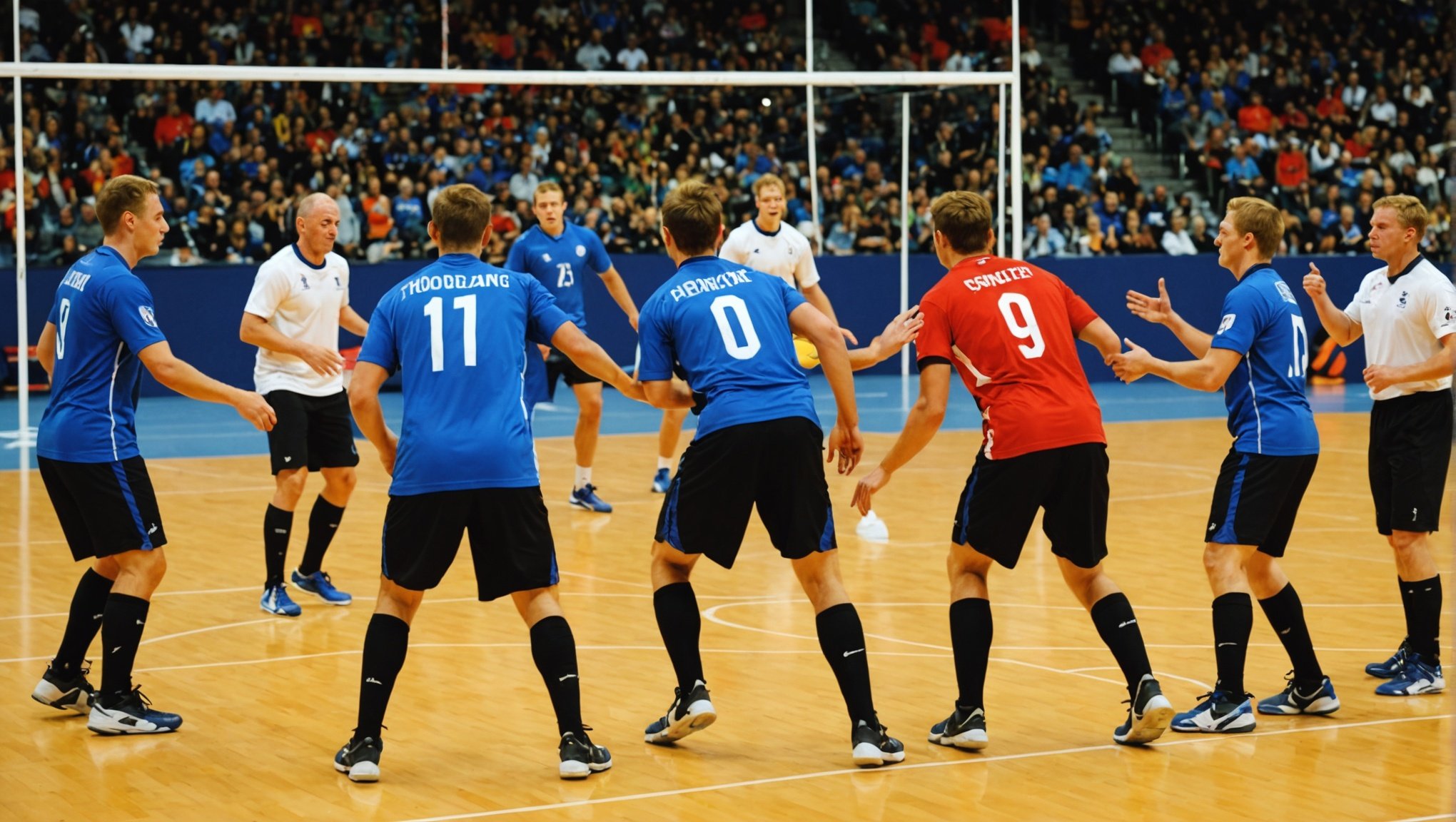Maximizing Tactical Communication: Key Strategies for Team Handball Athletes
The Importance of Tactical Communication in Team Handball
Tactical communication is the backbone of any successful team sport, and team handball is no exception. Effective communication among team members can make the difference between a well-coordinated attack and a disjointed defense. For team handball athletes, understanding and implementing strong tactical communication strategies is crucial for enhancing team performance and achieving long-term success.
In team handball, communication is not just about shouting out plays or warning teammates of incoming opponents; it involves a deep understanding of the game’s dynamics and the ability to make swift, informed decisions. As Dr. Alfonso De la Rubia Riaza, a specialist in sports performance, notes, “Communication is the key to unlocking the full potential of a team. It allows players to anticipate, react, and execute strategies seamlessly”.
In the same genre : Unlocking Power: Essential Grip Strength Techniques for Judo Athletes to Enhance Performance
Building a Culture of Communication
To maximize tactical communication, teams need to foster a culture where open and clear communication is valued and encouraged. Here are some steps to achieve this:
Team Meetings and Feedback
Regular team meetings are essential for discussing strategies, reviewing game footage, and providing feedback. These sessions help in aligning the team’s vision and ensuring everyone is on the same page. Coaches can use video feedback to analyze games and highlight areas where communication can be improved.
Also to see : Essential Strategies for Athletes to Reduce Concussion Risks in American Football
Practice Drills
Incorporate communication-focused drills into your practice sessions. For example, during a passing drill, players can be instructed to call out the name of the teammate they are passing to, or to signal if they are open for a pass. This habituates players to communicate constantly during the game.
Role of the Coach
The coach plays a pivotal role in promoting effective communication. They should model good communication themselves and encourage players to do the same. Here’s what a coach might say:
“Communication is not just about talking; it’s about listening and understanding. When you’re on the court, make sure you’re not just hearing your teammates but also understanding what they need from you.”
Player Responsibilities
Each player has a unique role in the team, and with that comes specific communication responsibilities. For instance, the center back is often the team’s playmaker and needs to communicate effectively with both the defense and the offense.
Key Communication Skills for Team Handball Athletes
Developing the right communication skills is vital for team handball athletes. Here are some key skills to focus on:
Clear and Concise Messaging
- Use Simple Language: Avoid complex instructions that might confuse teammates.
- Be Loud and Clear: Ensure your voice is heard above the noise of the game.
- Use Visual Cues: Hand signals or body language can be just as effective as verbal communication.
Active Listening
- Focus on the Speaker: Pay attention to what your teammates are saying.
- Ask for Clarification: If you’re unsure, ask for clarification to avoid misunderstandings.
- Acknowledge Instructions: Let your teammates know you’ve heard and understood their instructions.
Positive and Constructive Feedback
- Encourage Teammates: Positive reinforcement can boost morale and performance.
- Provide Specific Feedback: Instead of general comments, provide specific feedback that can help teammates improve.
- Be Respectful: Criticism should be constructive and respectful.
Using Data and Technology to Enhance Communication
In today’s digital age, data and technology can significantly enhance tactical communication in team handball.
Video Analysis
Using video analysis tools, coaches and players can review game footage, identify communication gaps, and develop strategies to improve. For example, a coach might use video to show how a lack of communication led to a missed opportunity or a defensive lapse.
Wearable Technology
Wearable technology can provide real-time data on player performance, including metrics on communication. This data can be used to optimize training programs and improve overall team communication.
Communication Apps
There are several apps designed to facilitate team communication. These apps allow coaches and players to share strategies, discuss game plans, and communicate during games.
Case Study: Effective Communication in Action
To illustrate the impact of effective communication, let’s look at a real-world example. In a study on preadolescent female handball players, researchers found that even low-volume supplementary plyometric training, when combined with effective communication and teamwork, led to significant improvements in performance. The study noted that “both low- and moderate-volume plyometric training resulted in similar improvements in modified T-test performance, linear sprint performance, countermovement jump, and standing long jump”.
This example highlights how a well-coordinated team effort, facilitated by strong communication, can lead to enhanced performance across various aspects of the game.
Practical Tips for Coaches and Athletes
Here are some practical tips that coaches and athletes can implement to improve tactical communication:
Pre-Game Preparation
- Review Game Plans: Go over the game strategy and ensure everyone understands their role.
- Assign Communication Roles: Designate specific players to be communication leaders during the game.
During the Game
- Use Standardized Calls: Establish standardized calls for different situations to avoid confusion.
- Stay Calm Under Pressure: Keep communication clear and calm, even in high-pressure situations.
Post-Game Analysis
- Review Communication: Analyze communication during the game to identify areas for improvement.
- Provide Feedback: Give constructive feedback to players on their communication skills.
Table: Comparing Communication Strategies
| Strategy | Description | Benefits | Challenges |
|---|---|---|---|
| Team Meetings | Regular meetings to discuss strategies and review game footage. | Aligns team vision, improves strategy execution. | Requires time commitment, can be tedious if not engaging. |
| Practice Drills | Incorporating communication-focused drills into practice sessions. | Habituates players to communicate constantly. | May require additional practice time. |
| Video Analysis | Using video tools to review game footage and identify communication gaps. | Provides clear visual feedback, helps in strategy development. | Requires access to technology and software. |
| Wearable Technology | Using wearable devices to track player performance and communication metrics. | Offers real-time data, helps in optimizing training programs. | Can be expensive, requires technical expertise. |
| Communication Apps | Using apps to facilitate team communication and strategy sharing. | Convenient, accessible, and easy to use. | May have limitations in terms of features and user interface. |
Tactical communication is a multifaceted aspect of team handball that requires careful planning, practice, and the use of modern technology. By fostering a culture of open communication, developing key communication skills, and leveraging data and technology, teams can significantly enhance their performance.
As a scholar in sports sciences might say, “Effective communication is the glue that holds a team together. It’s what turns individual athletes into a cohesive unit capable of achieving greatness on the court”.
In the words of a seasoned coach, “Communication is not just about winning games; it’s about building a team that works together towards a common goal. When your players communicate effectively, you see a team that is more than the sum of its parts.”
By following these strategies and tips, team handball athletes and coaches can take their communication to the next level, leading to improved performance and long-term success in the game.






